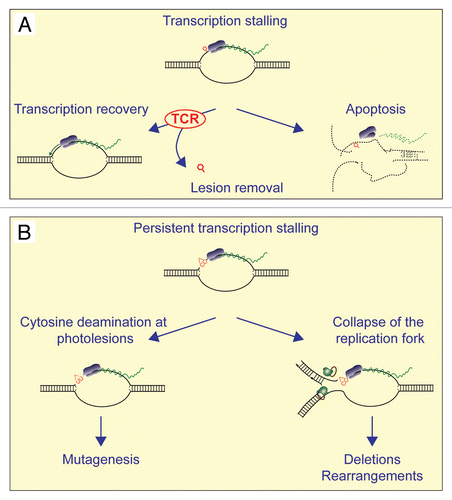Figures & data
Figure 1 Model for the roles of TCR and transcription arrest-associated apoptosis in protection against UV-TAM. (A) TCR is initiated by stalling of the elongating RNA polymerase and results in removal of the transcription-blocking photolesion, thereby allowing transcription recovery. In case the load of photolesions exceeds the capacity of TCR or when TCR is impaired, arrested transcription complexes induce apoptosis when the cell enters S phase. (B) Persistent stalling of the transcription complex at a deoxycytidine-containing-CPD at the template strand results in its increased spontaneous deamination frequency. In case the lesion is not timely removed by TCR, or when the cell escapes from apoptosis, it will result in a C to T transition mutation during replication. Alternatively, persistent stalling of the transcription complex at a photolesion may lead to collapse of an approaching replication fork, resulting in DSBs and genome instability.
